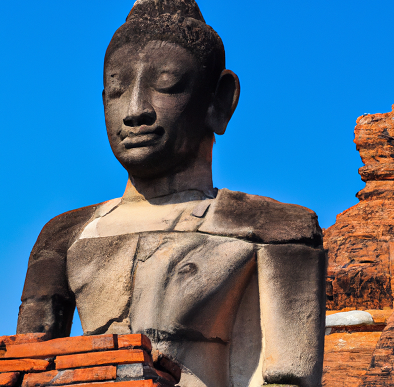Archaeologists Unearth Ancient Buddha Statue in Egypt
Archaeologists have recently unearthed a stunning ancient Buddha statue in Egypt, believed to have been carved in the 5th century AD. The statue is made of limestone, and stands at a height of 1.2 meters (3.9 feet). It is thought to have been carved during the reign of the Byzantine Emperor Anastasius I (491-518 AD). The statue was discovered in the Kom el-Nana archaeological site, located in the ancient city of Alexandria. The area is known to have been a major hub for Buddhist pilgrims in the late Roman period. According to archaeologists, the statue was discovered in the remains of a former monastery. The statue depicts a seated Buddha with his hands in a meditative posture. He is wearing a thin robe, and his head and face are adorned with a traditional crown.

His eyes are closed in a peaceful expression. The statue also features intricate carvings on the robe and other details, as well as a small inscription in Greek on the base. The discovery of this statue is significant because it is one of the earliest known representations of the Buddha in Egypt. It is also the first time that a representation of the Buddha has been found in the Mediterranean region. The statue provides valuable insight into the spread of Buddhism in the region during the late Roman period. The statue is currently in the hands of the Egyptian Ministry of Antiquities, and is being preserved and studied. It is hoped that further research and analysis will reveal more about the history of Buddhism in Egypt, as well as the artist who created this beautiful piece of art. The discovery of this ancient Buddha statue is an exciting and important addition to our understanding of the spread of Buddhism in the ancient Mediterranean. It is a reminder of the power of art and religion to transcend boundaries, and to connect people across time and space.